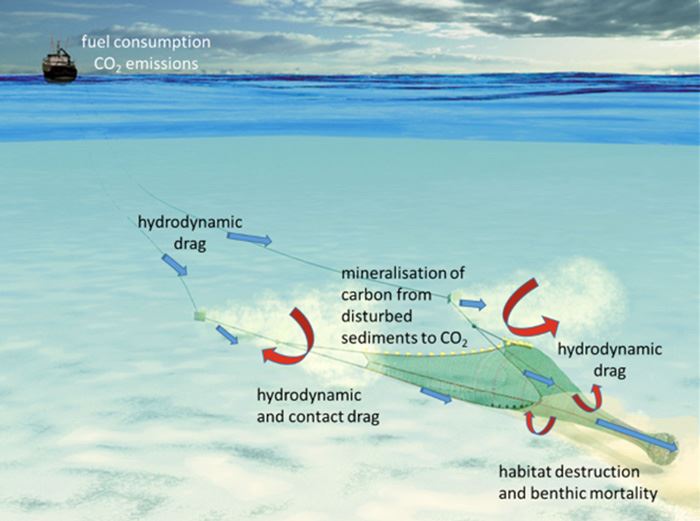RightFish aims to improve the design and development of low-impact towed fishing gear.
Towed fishing gear disturb ecological communities on the sea floor, release CO2 from the sediments, and require large amounts of fuel. This leads to the destruction of demersal habitats and less productive fisheries, and makes the fishing industry less sustainable. By developing methods and criteria for designing gear with lower impact on the sea floor, we can objectively quantify how environmentally friendly a given fishing gear is, which creates a more transparent value chain.
In RightFish we will develop generic methodologies that will improve our ability to design and develop such low impact towed fishing gear. We will advance the state of the art in the design of commercial trawl gear by establishing criteria for small scale modelling that incorporate the contact forces associated with fishing gear being towed over the seabed.
These approaches will be applied in two case studies which characterise European demersal trawl fisheries to demonstrate the environmental and economic benefits that can be achieved. The newly developed gear will be more fuel-efficient, disturb fewer carbon-rich sediments and penetrate less into the seabed.
That way, marine resources will be managed and harvested in a sustainable way that maintains ecosystem integrity and resilience, and reduces greenhouse gas emissions. In addition, the gear will have reduced fuel costs and are likely to lead to increased fishing opportunities, improved market access, and higher prices. Hence, they will contribute to sustainable production in the Blue Bioeconomy by allowing the development of transparent, certifiable, and traceable standards and processes which can be used to establish consumer trust and increase marketing opportunities.


